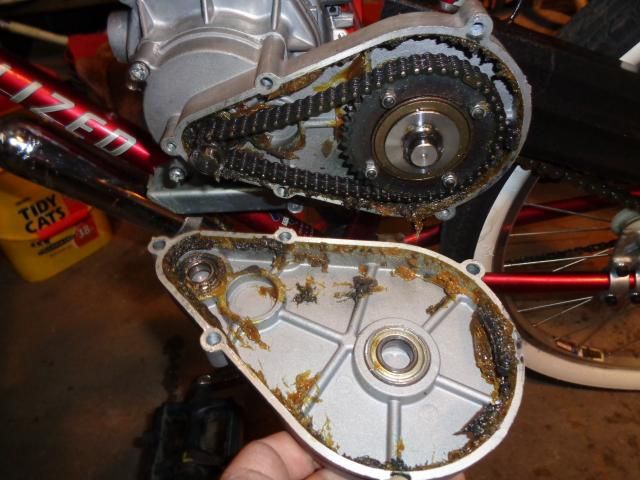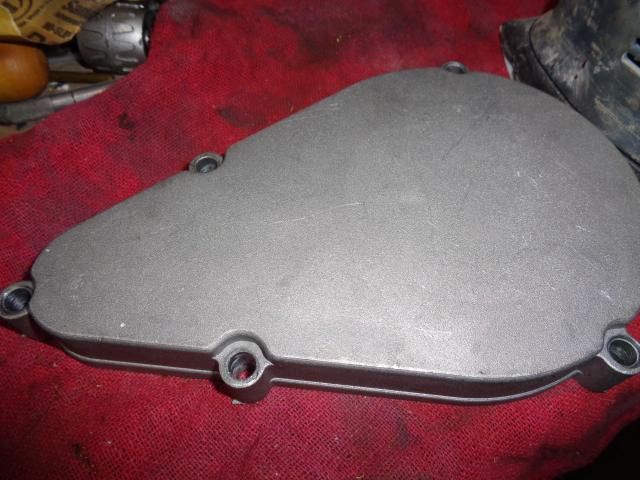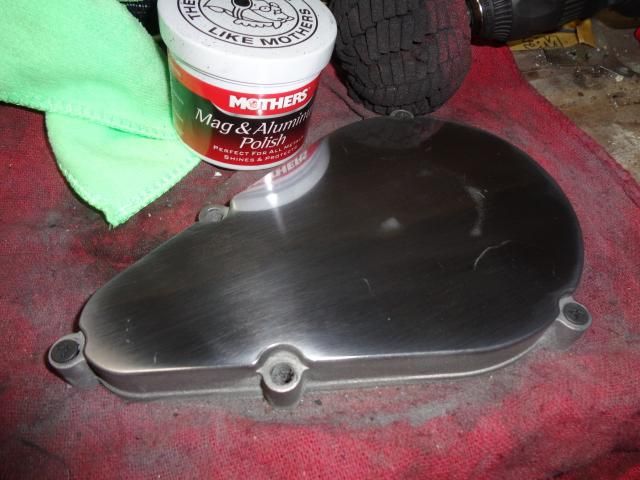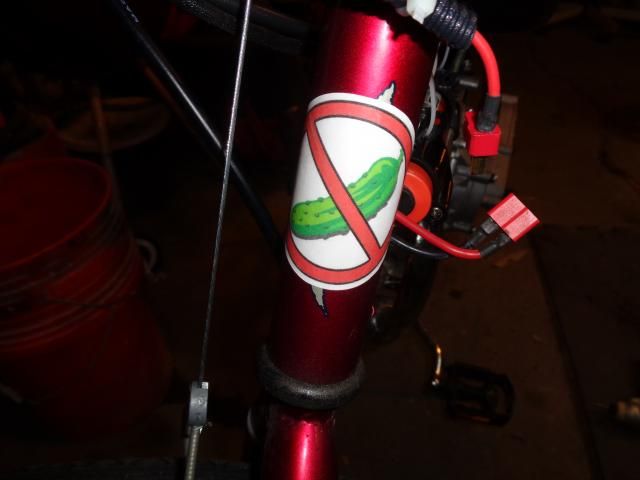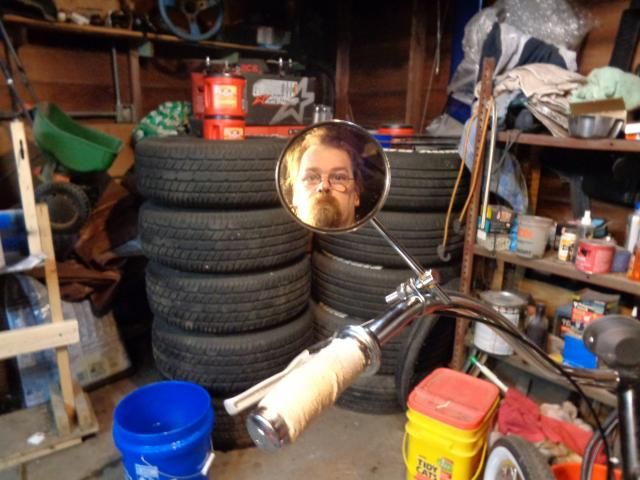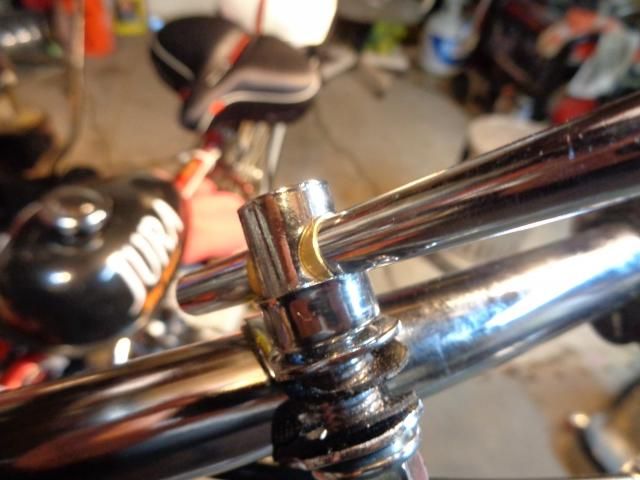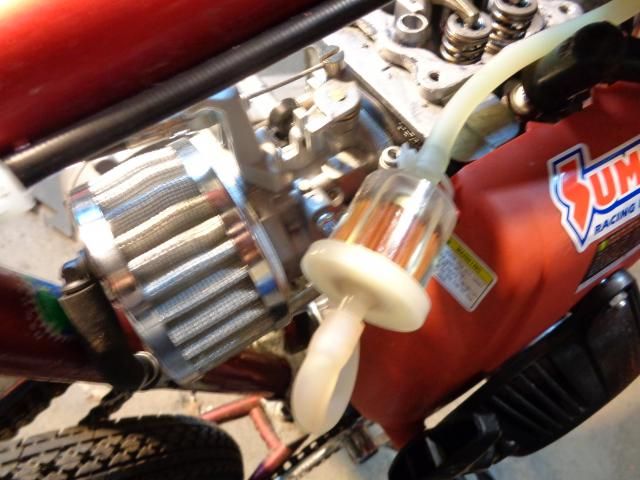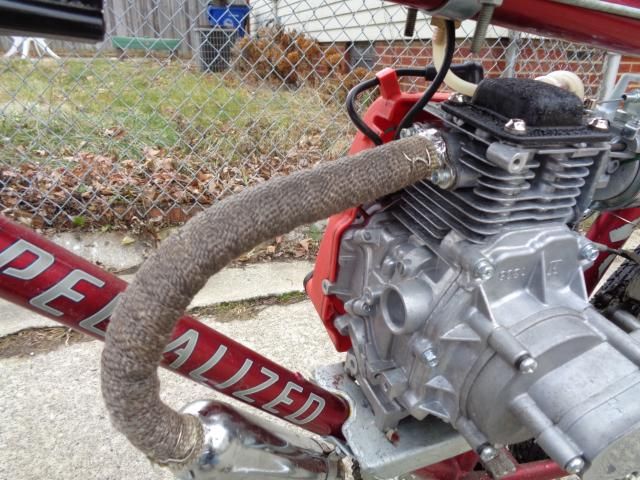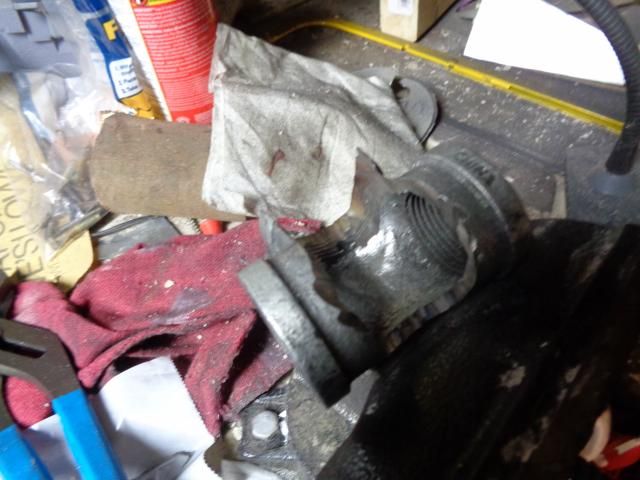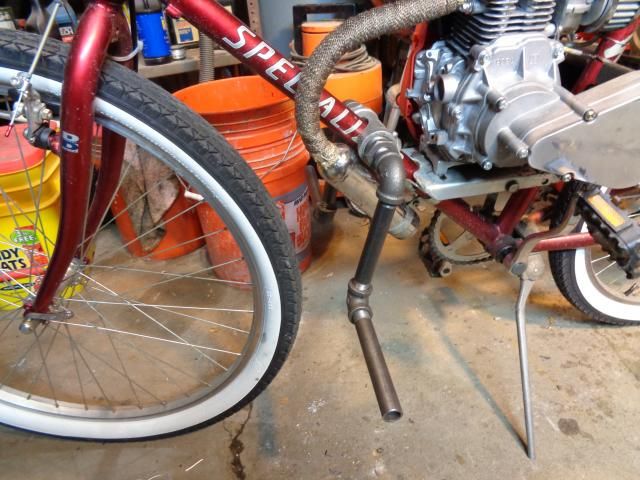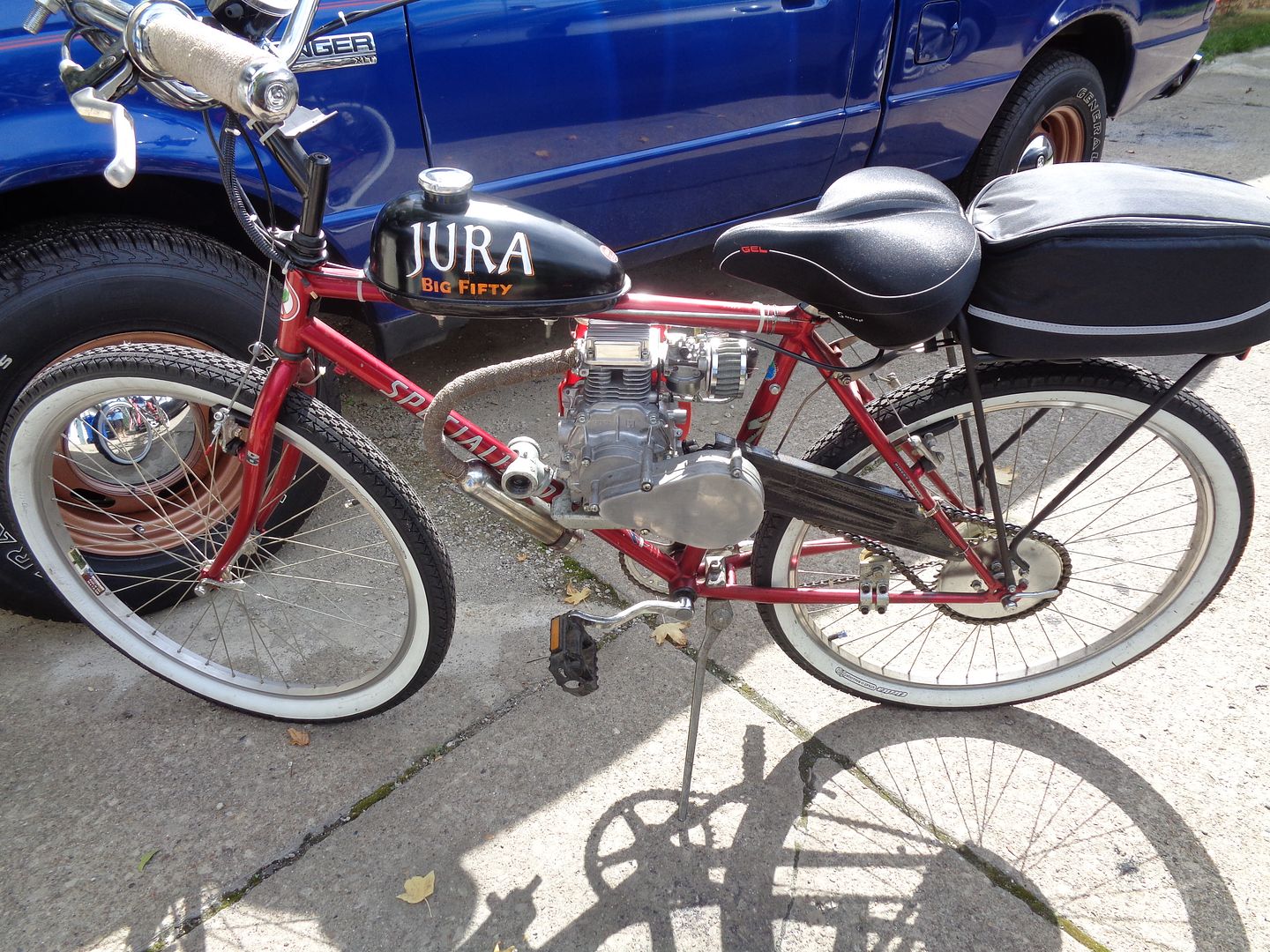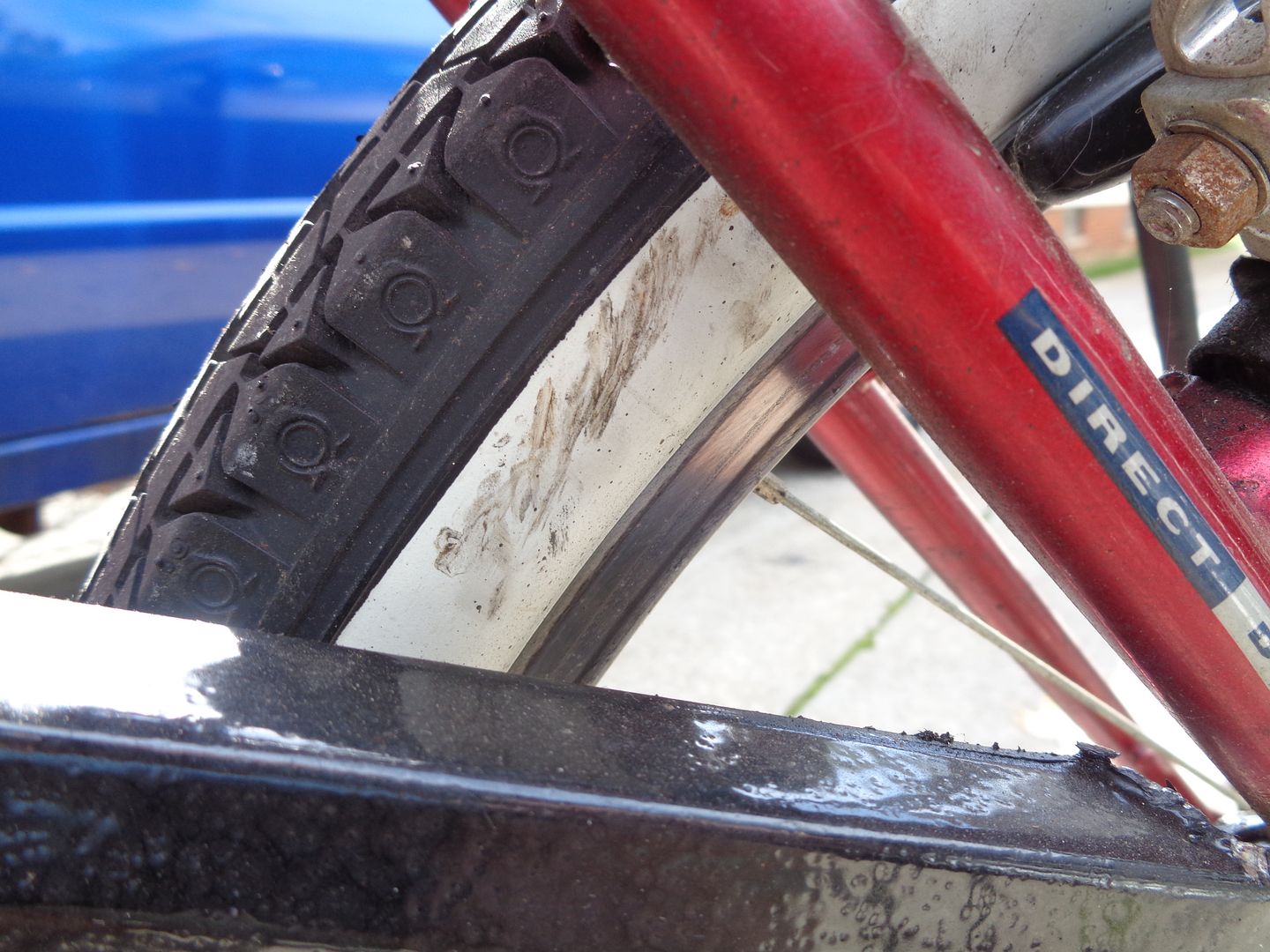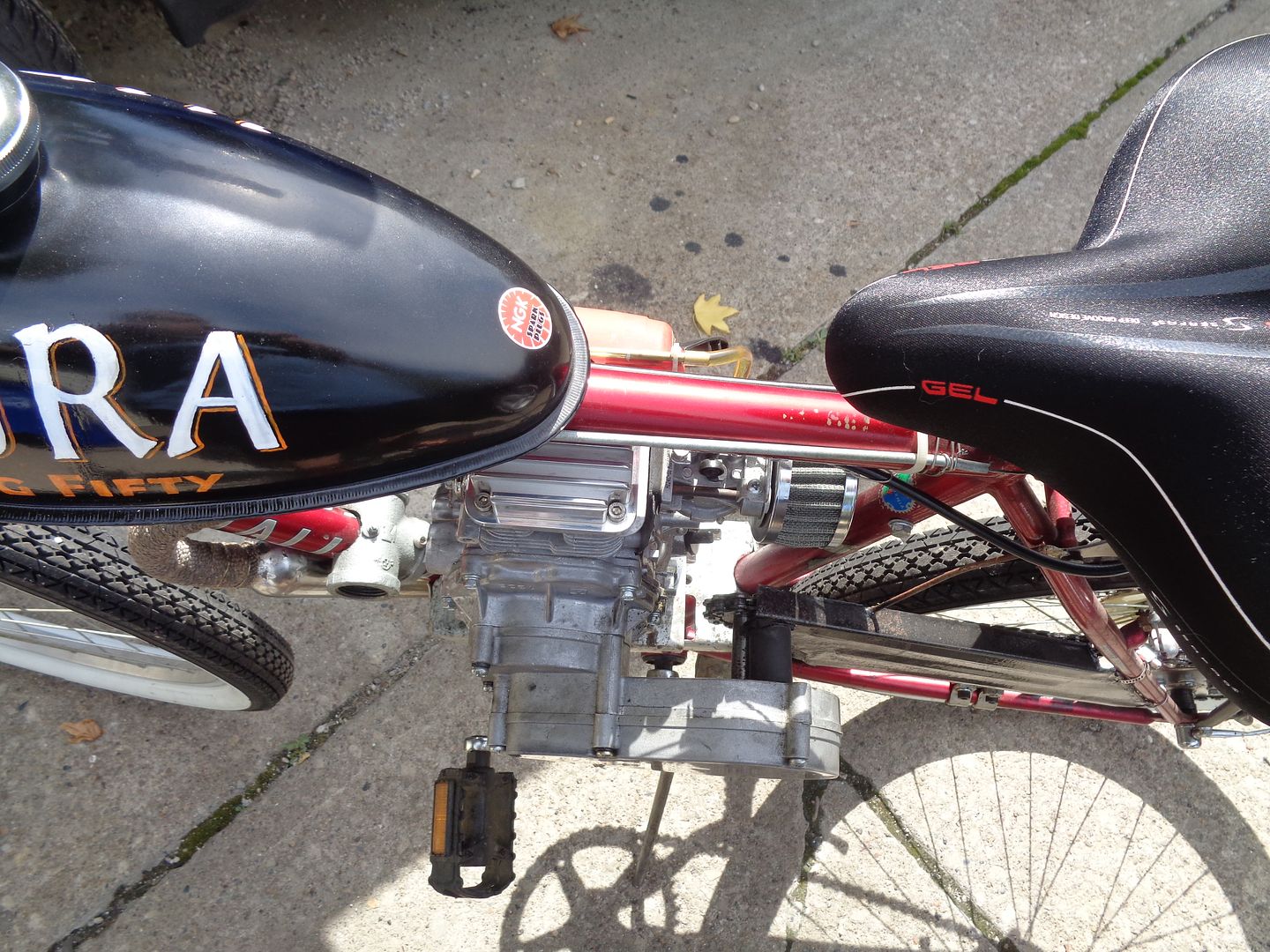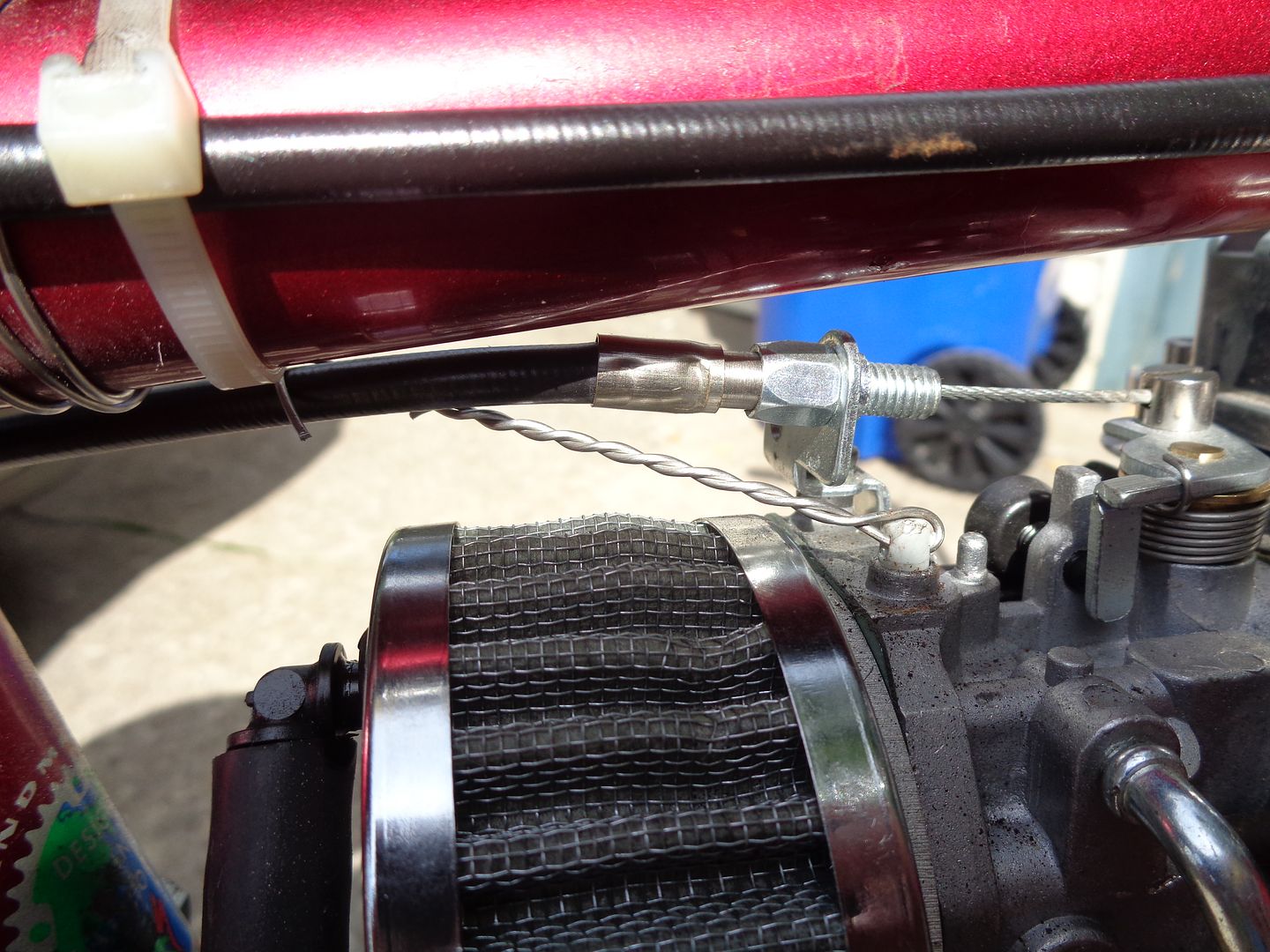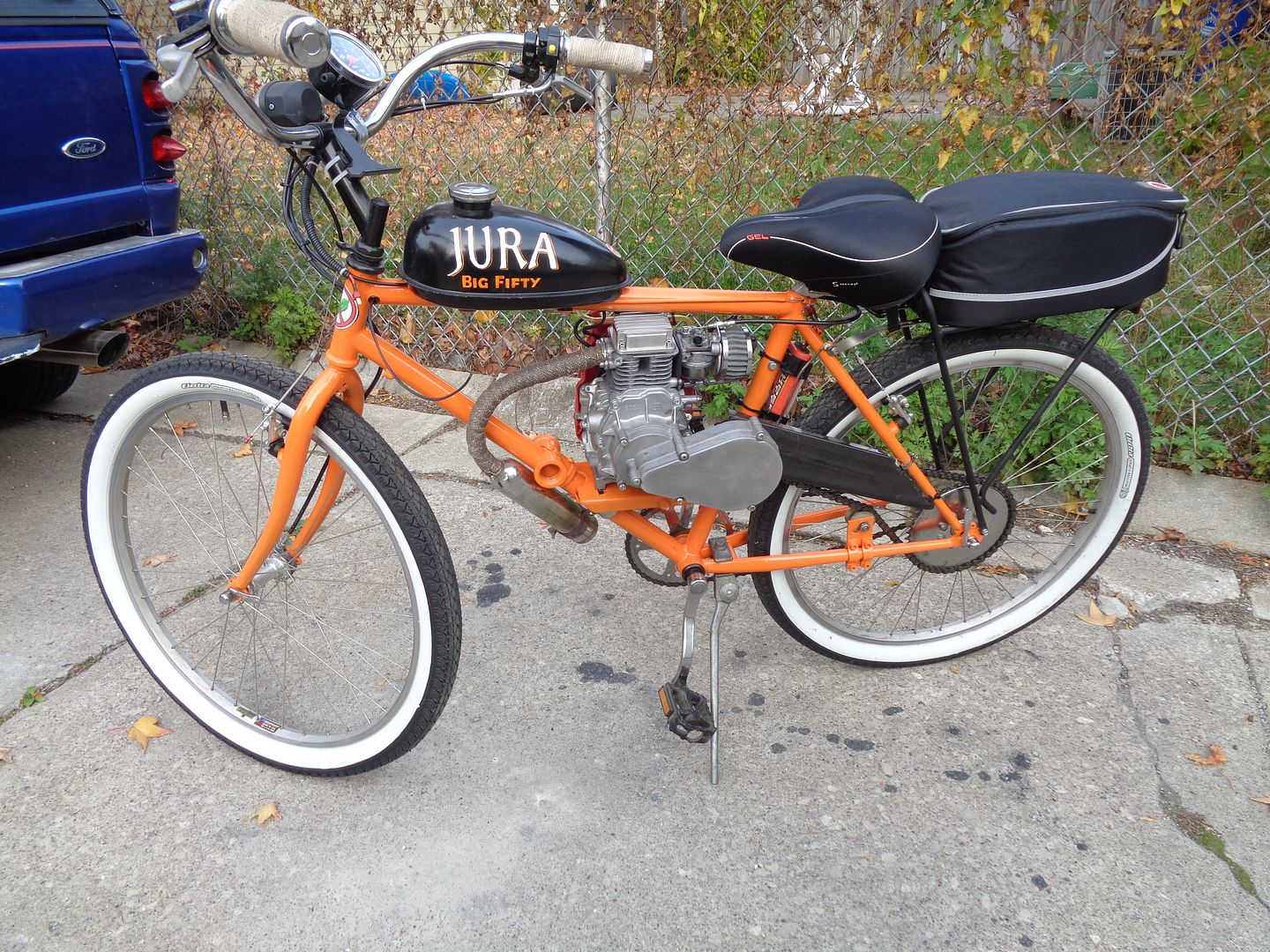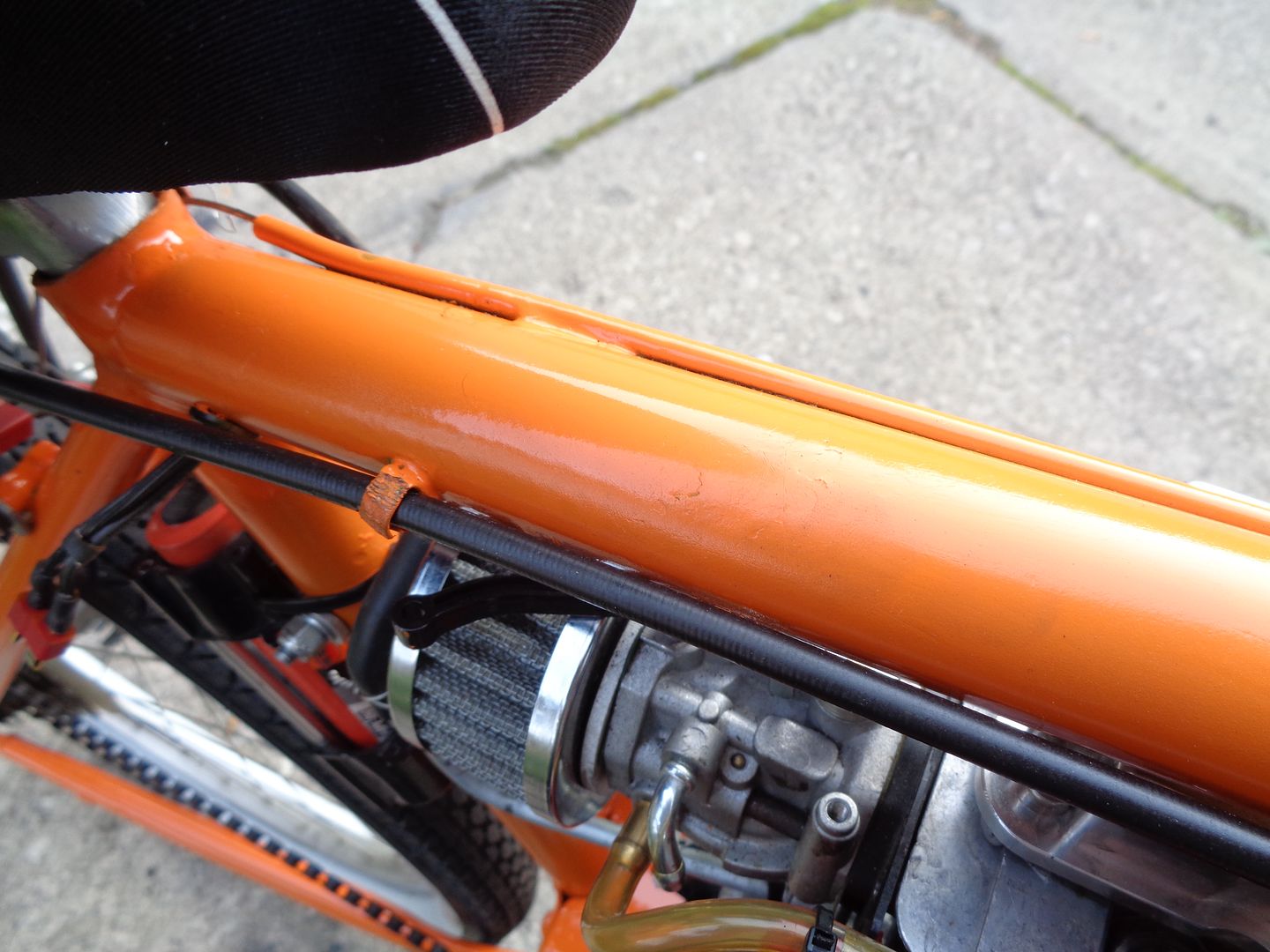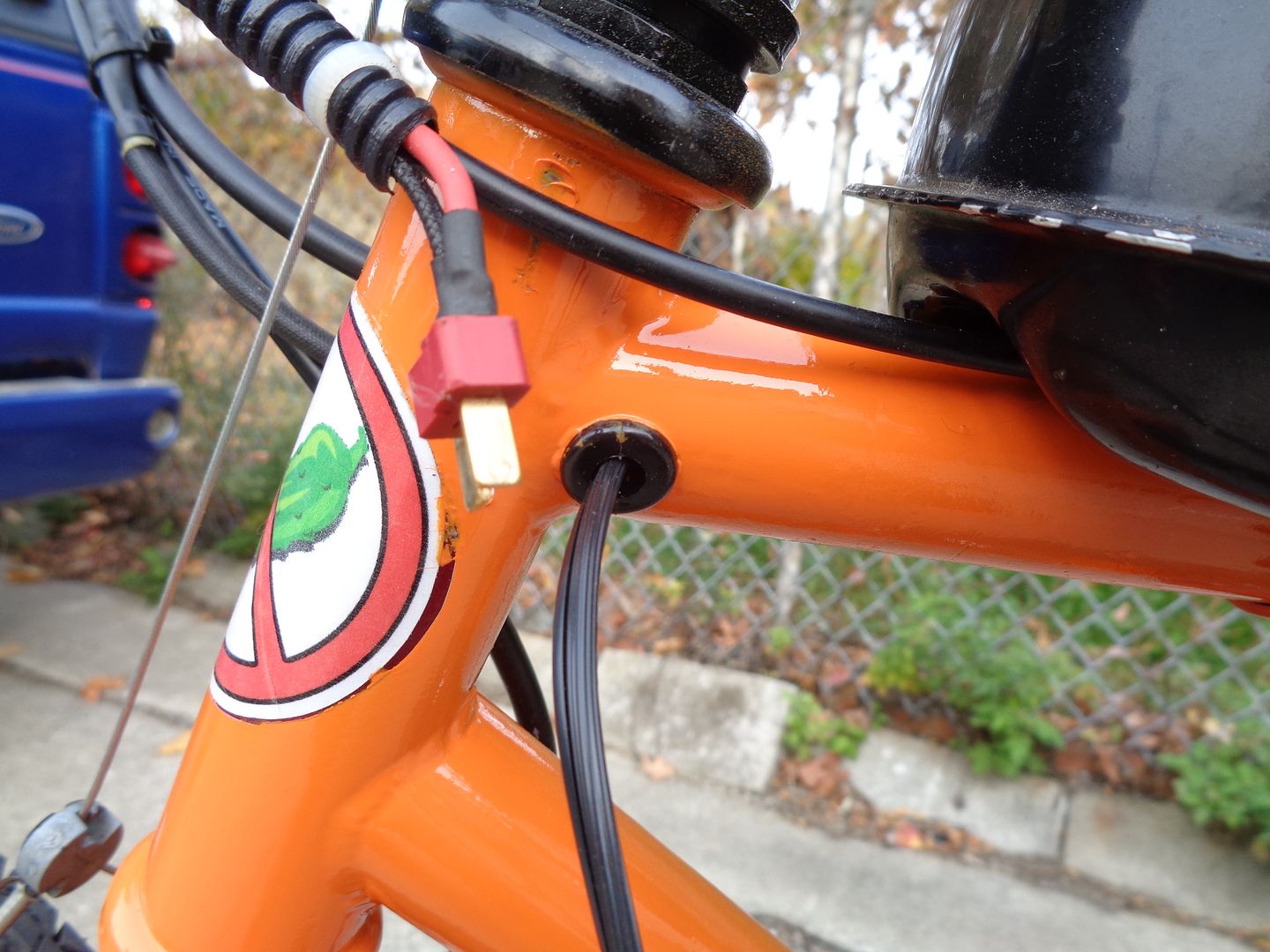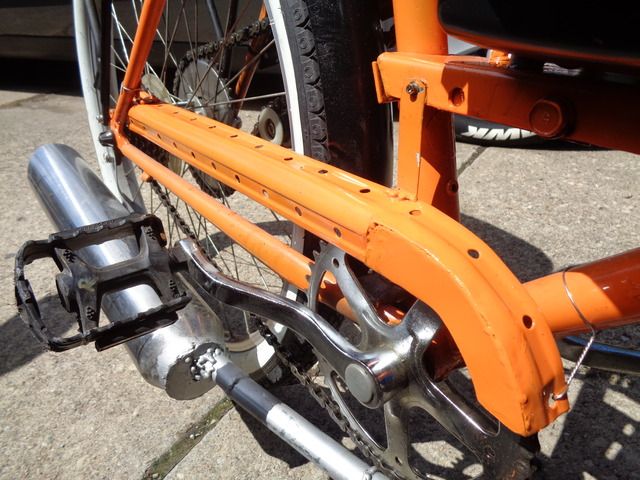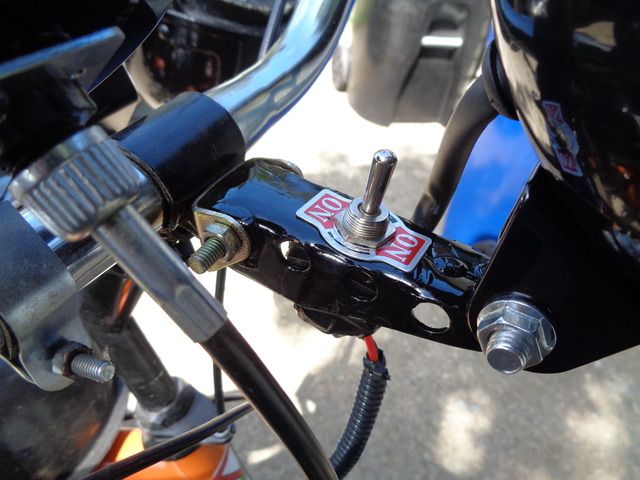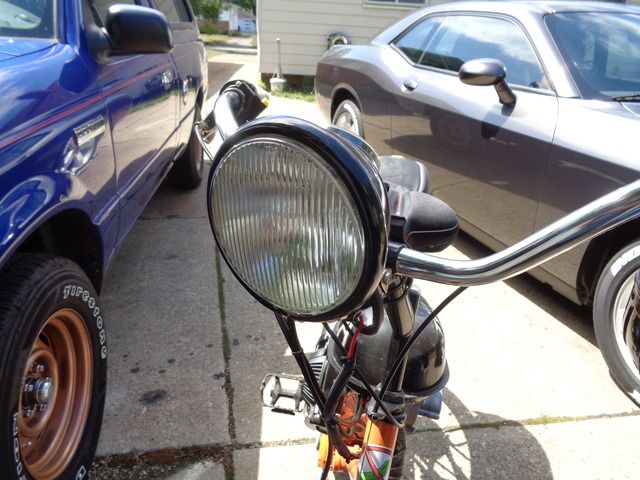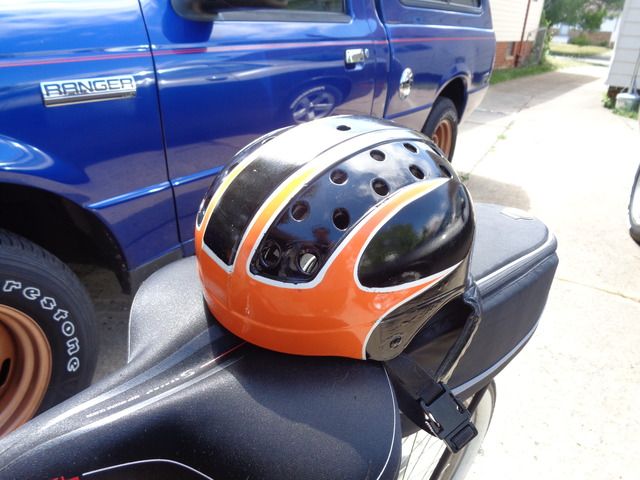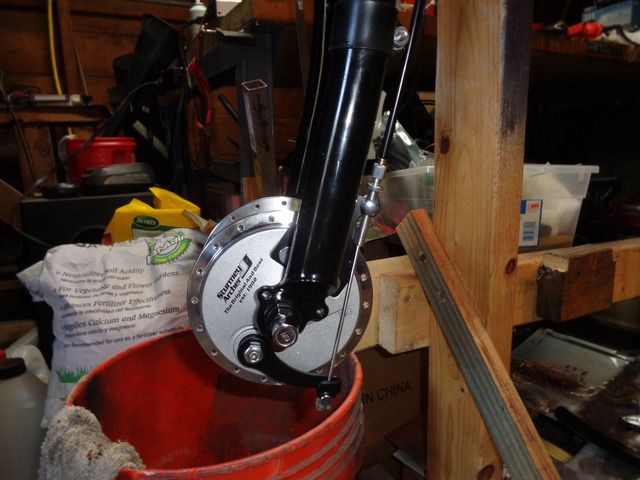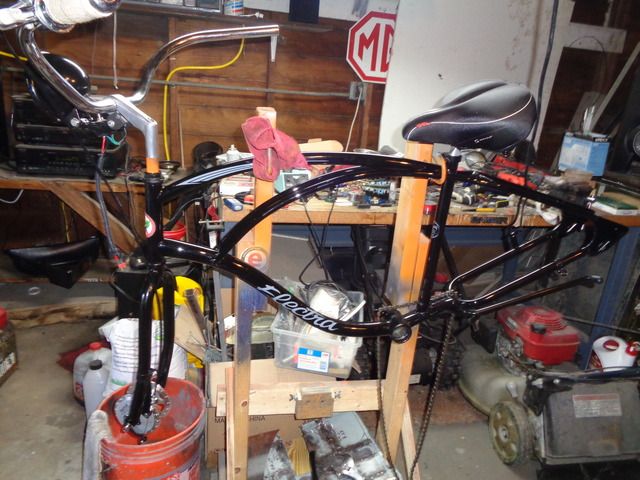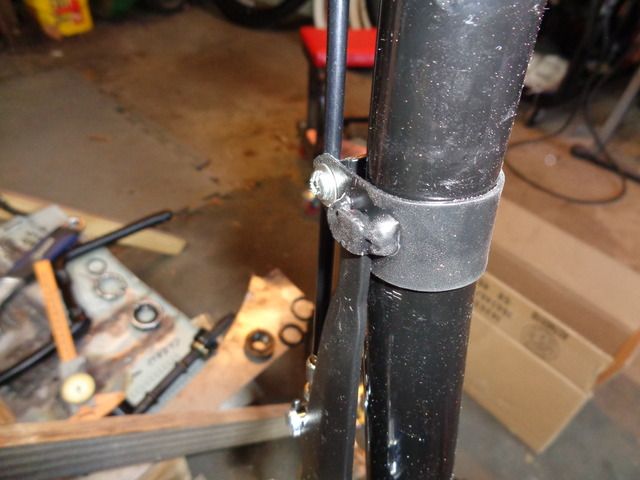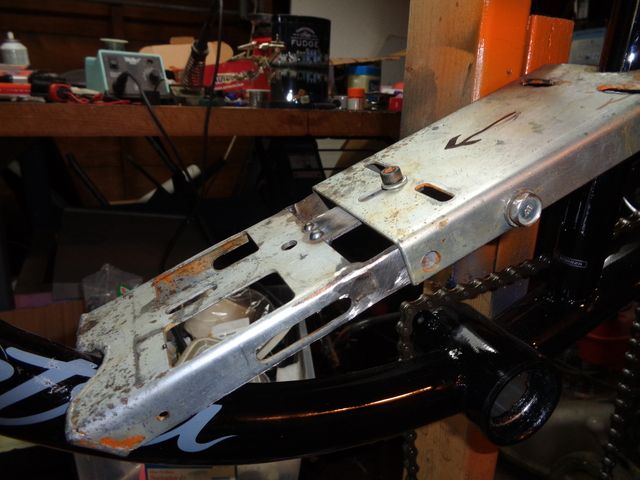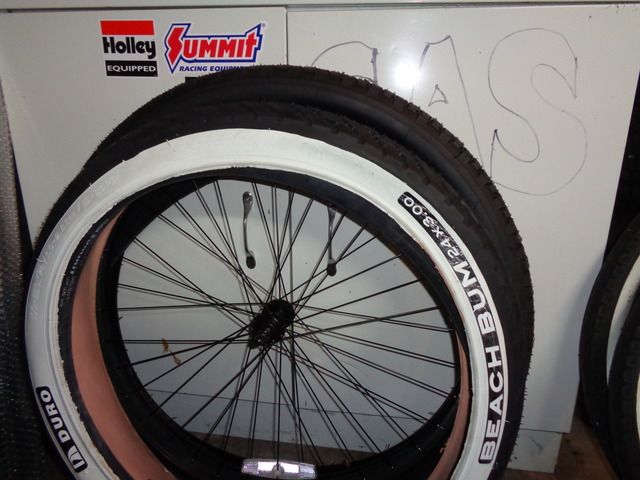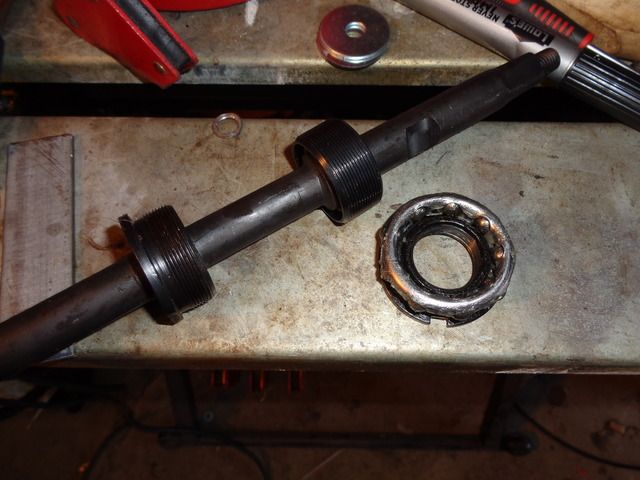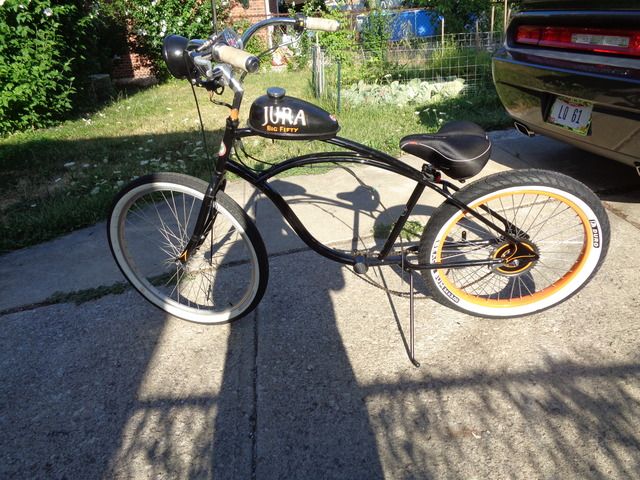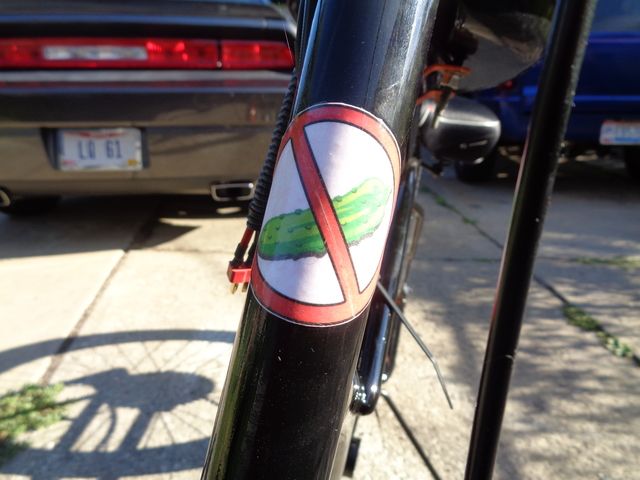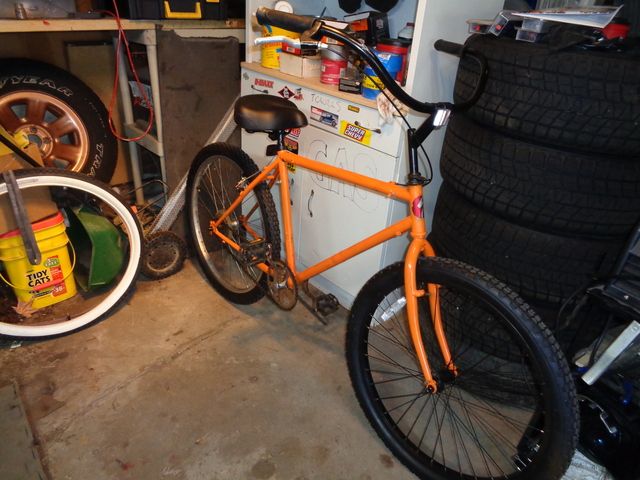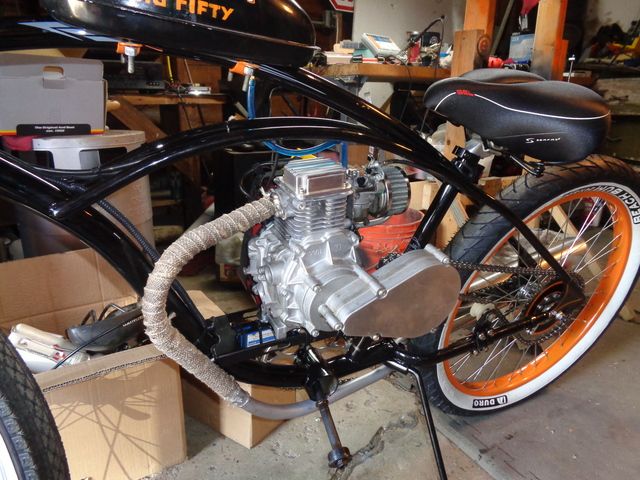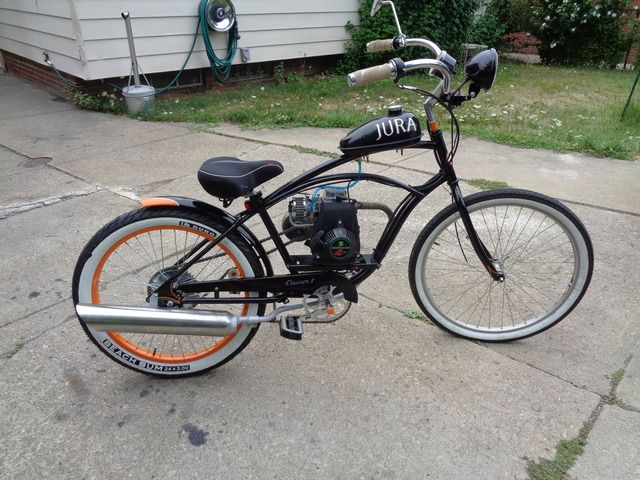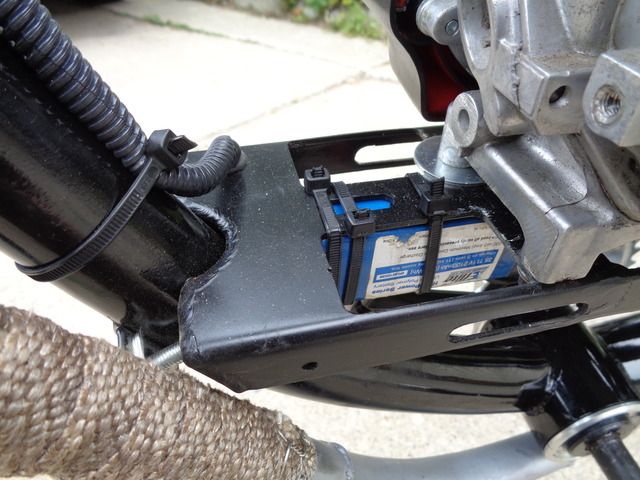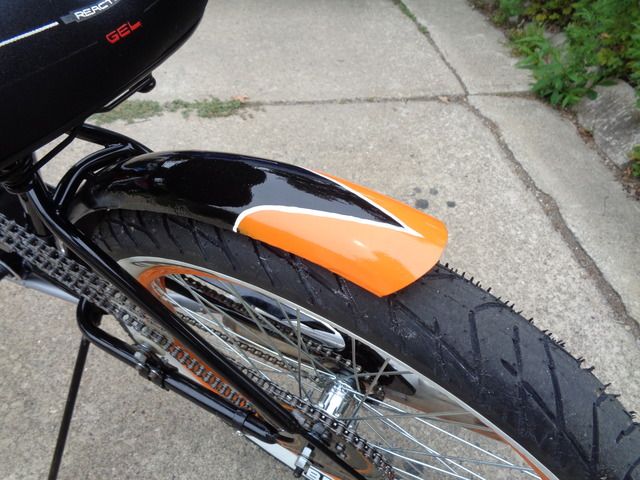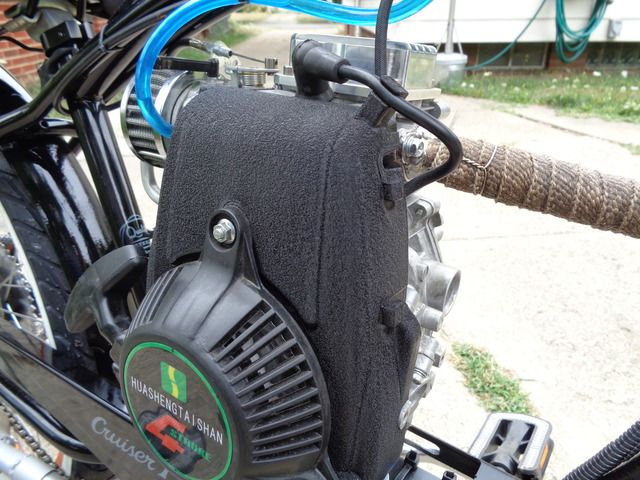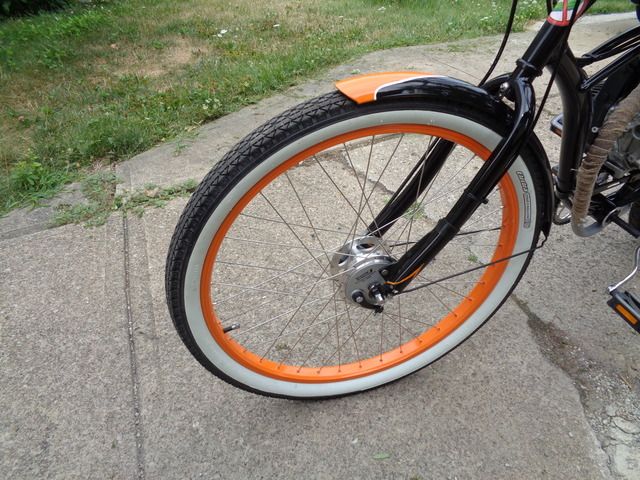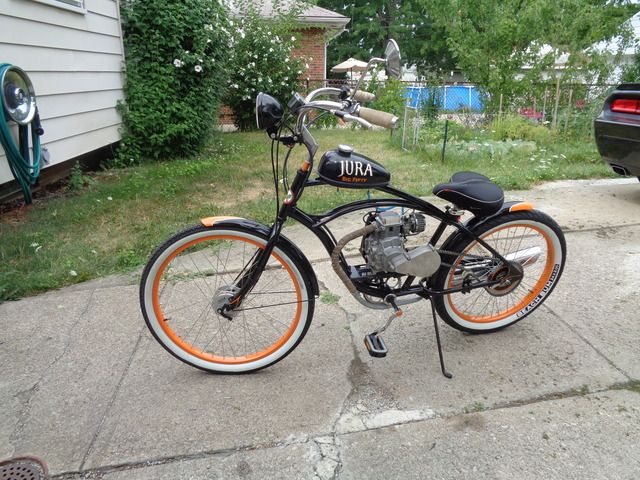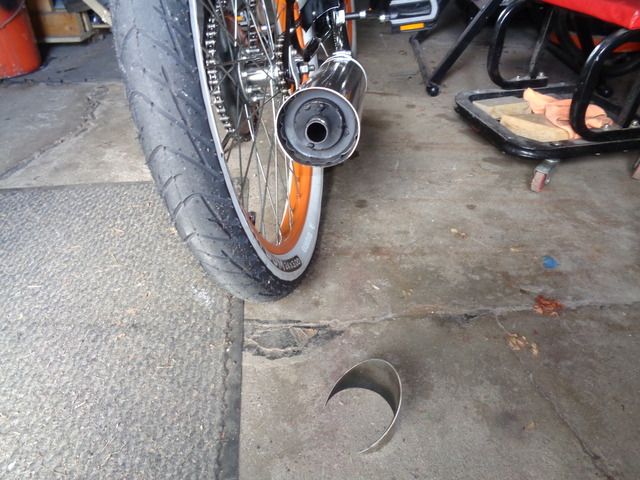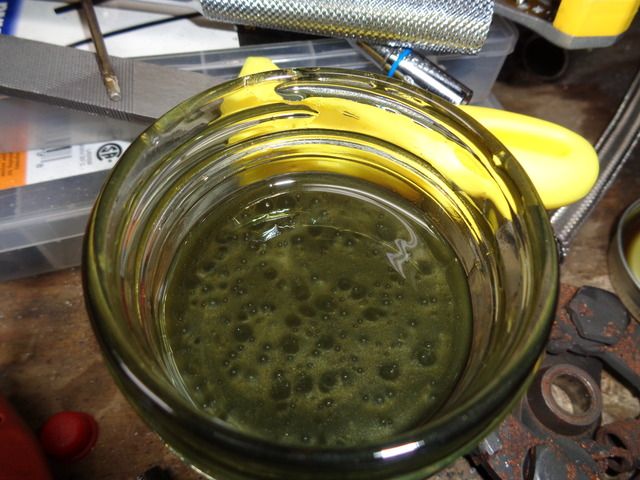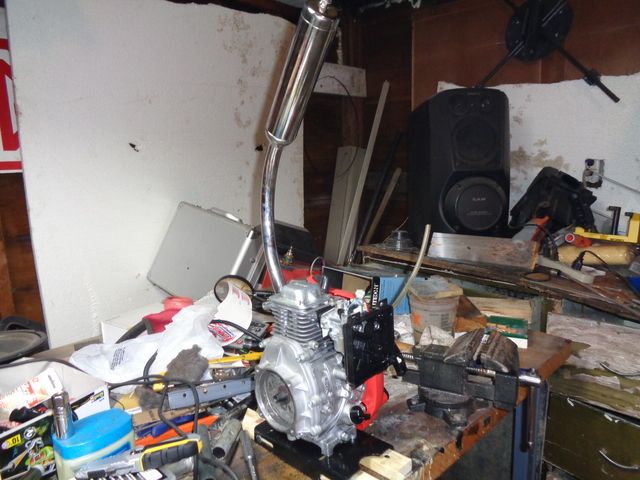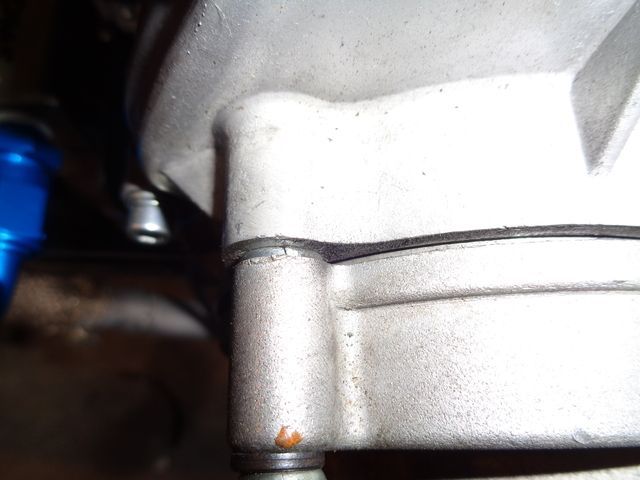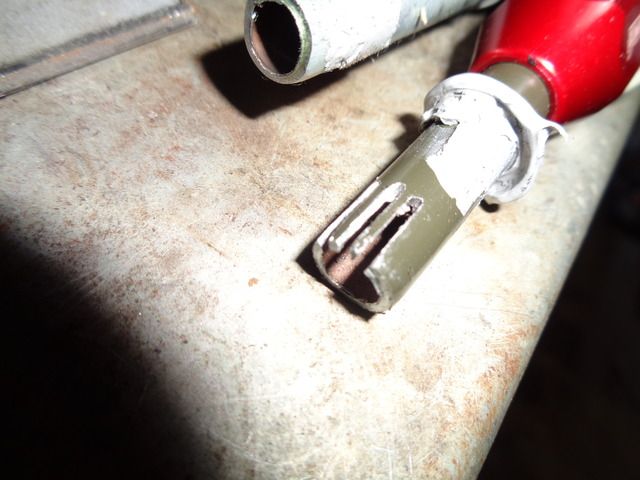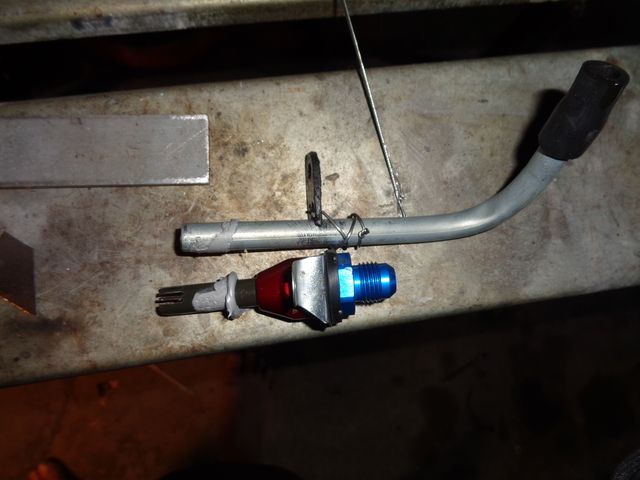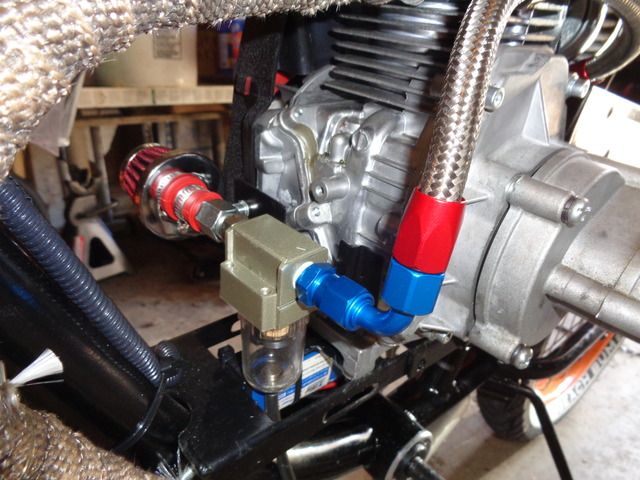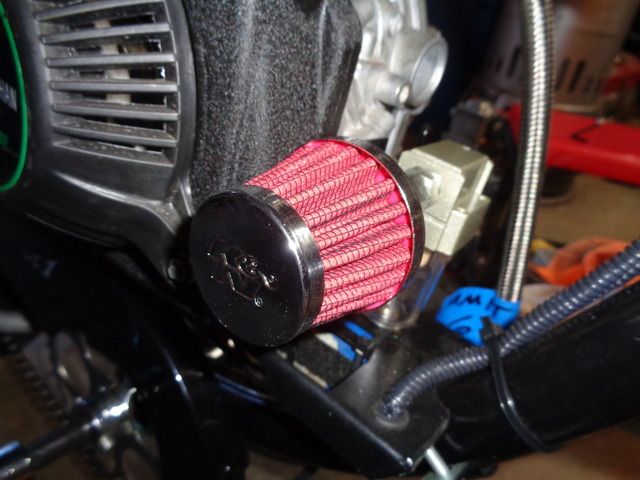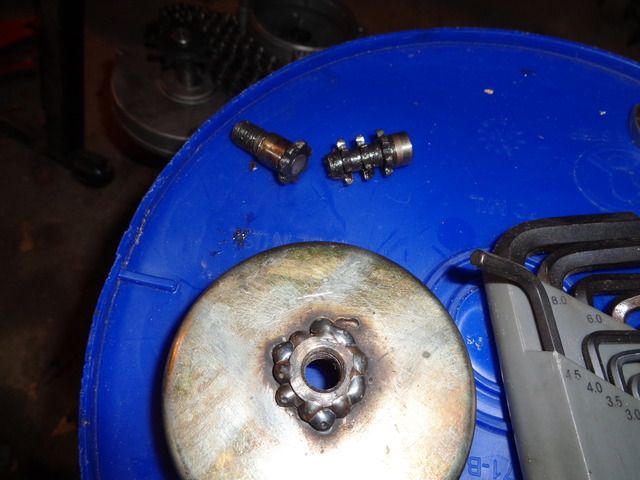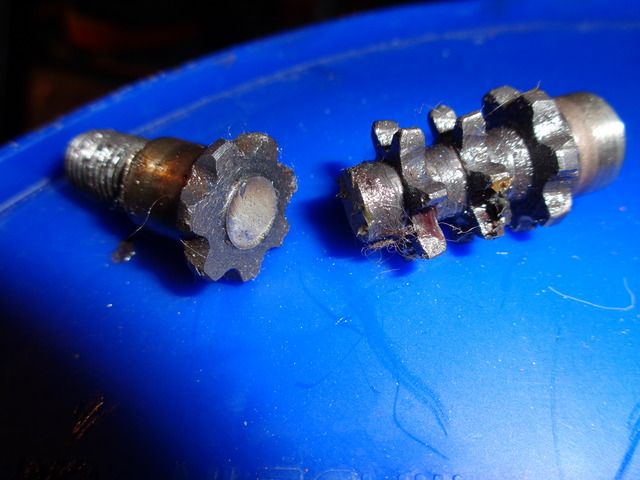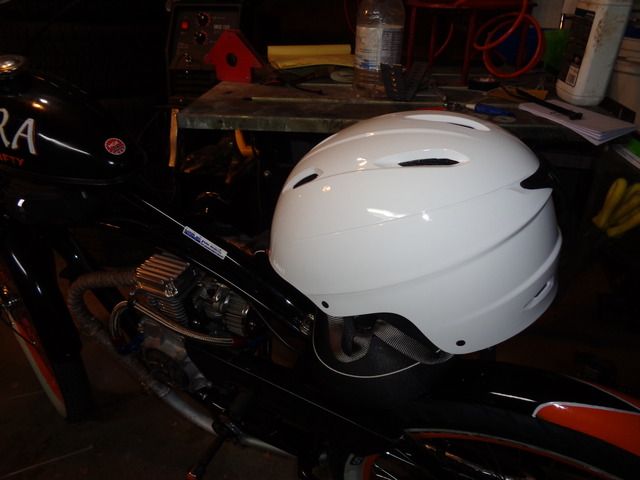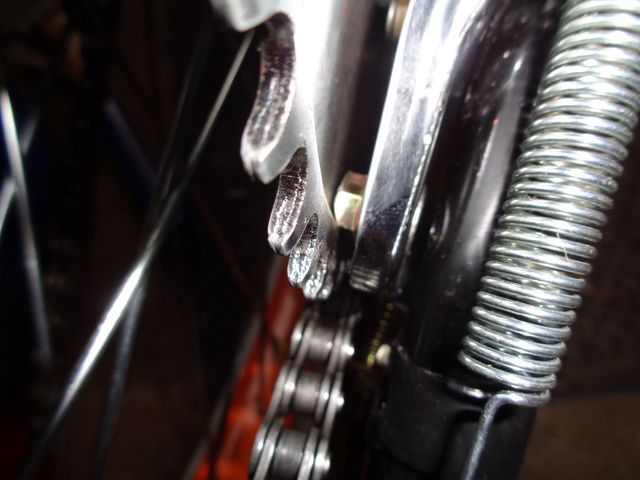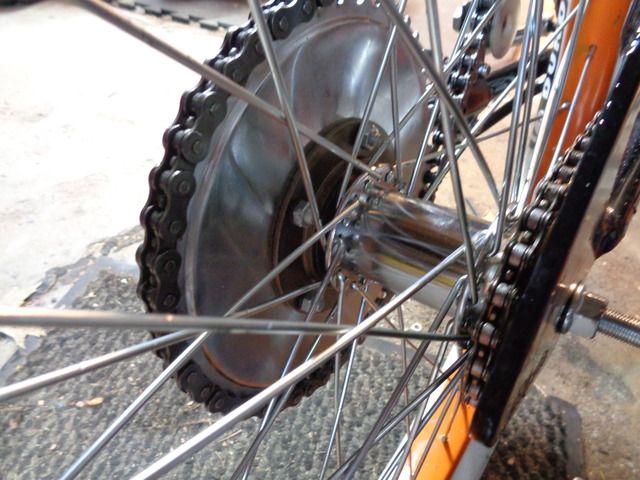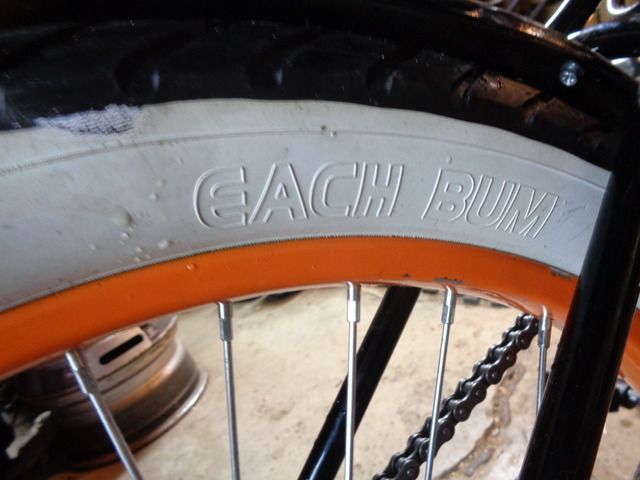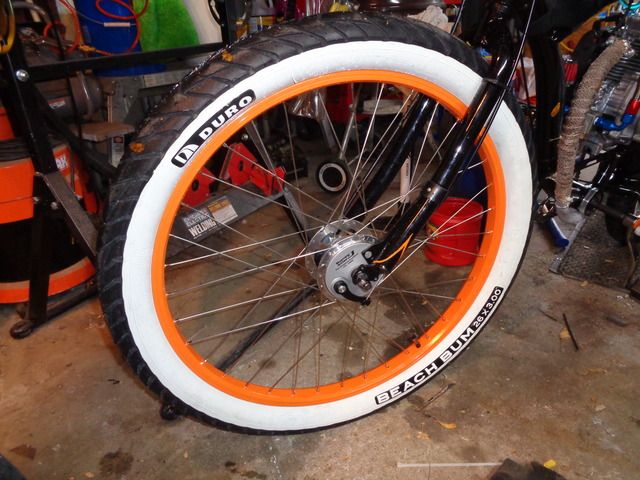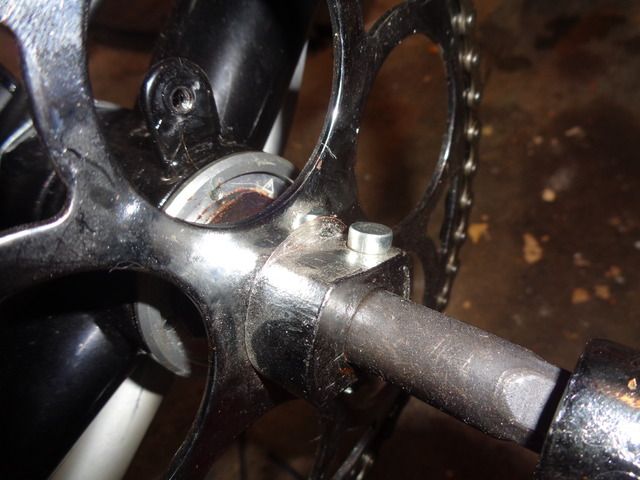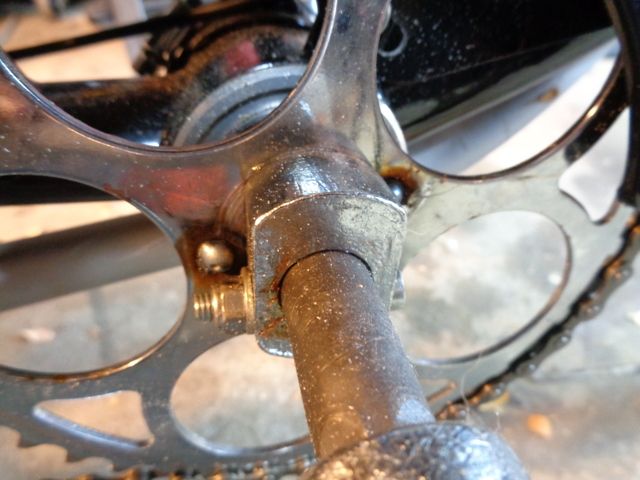The adventure continues...
Dissecting the old engine (which shares no parts with the new, despite being drawn from the same Honda engine) I noticed this chamber above the crankcase:
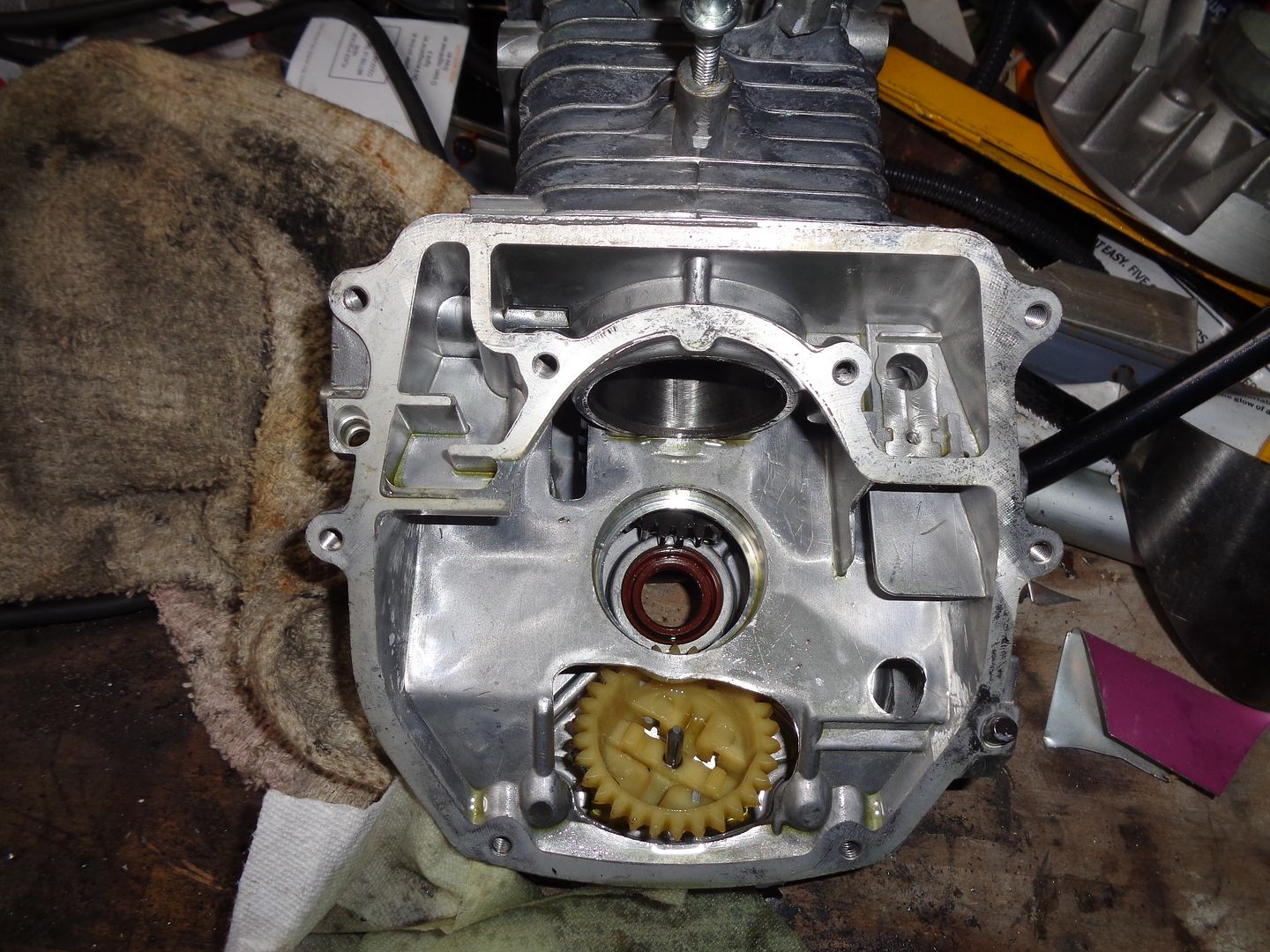
The small hole on the right side of the chamber communicates with the crankcase proper via a flapper valve (removed). The chamber's outlet on the left goes to the atmosphere (or the PMS). My previous breather was a simple tube going up to the air cleaner, about 4 inches higher than the chamber's exit. This tube managed to fill up with oil and puke it into the air cleaner, necessitating the last post.
As you can surmise, there must have been one hell of a lot of blowby to get oil up into the chamber and up the tube to the air cleaner. So I'm really glad to have that new engine, which so far hasn't puked any oil at all.
I rode to the post office, 2 miles each way, but had an incident on the return trip. The chain tensioner wants to go walkabout, forward on the chainstay, and loses tension enough that the chain then jumps. So I went to work on that:
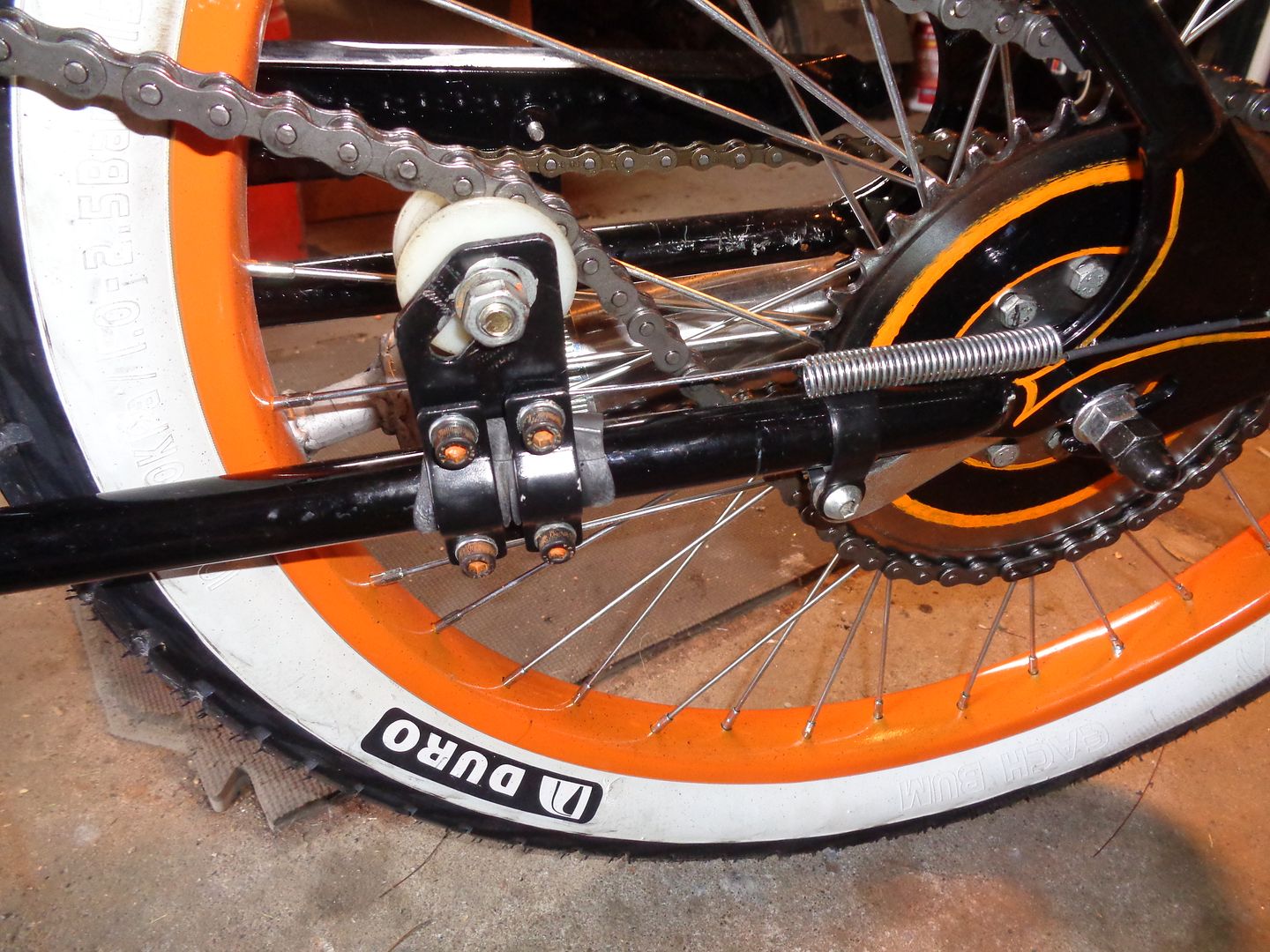
Problem is that the paint is just too glossy for the tensioner to stay in place. So I wrapped a bit of leaky old inner tube around the chainstay, with a bit of contact cement to keep it in place, and reinstalled the tensioner. The spring should help, too. If this doesn't work I'll weld the little booger in place.
Hey, speaking of welding:

This is a vertical brace made from steel strap and some exhaust pipe. It keeps the engine from rocking side to side. The exhaust pipe wraps around the bottom bracket, and a hose clamp keeps it tight.
In other news, the high-speed misfire is gone. I changed the magneto after noticing the one that came with the new engine is larger and heavier (meaning it's got more copper in it). Now I've got a stronger idle, and the engine pulls nice and hard all the way up to 32 mph.
Now all I need is a Marlon Brando leather jacket.
